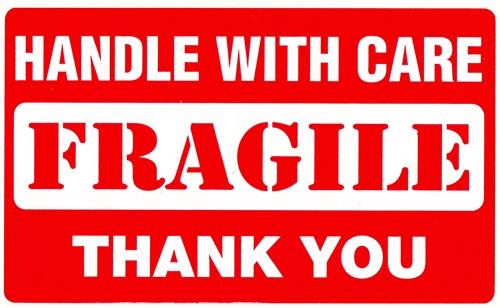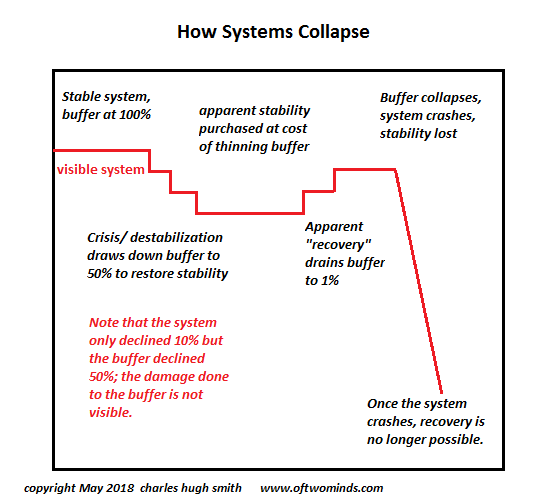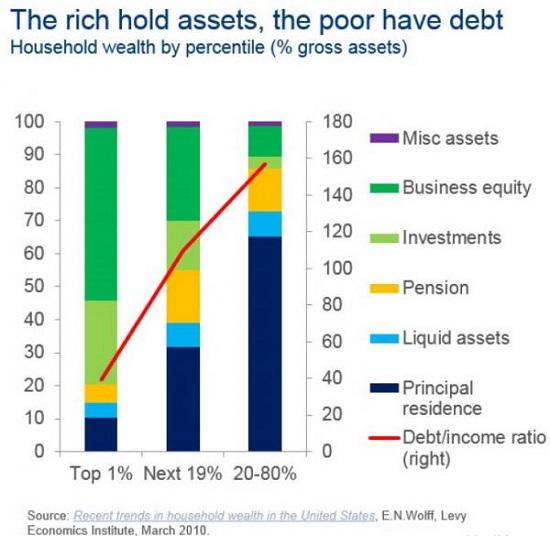Authored by Robert Murphy via The Mises Institute,
[Editor’s note: MMT is back in the news, championed by Congresswoman Alexandria Ocasio-Cortez and former Bernie Sanders advisor Stephanie Kelton. Economists like Brad DeLong and Paul Krugman are giving MMT at least faint praise, and even National Review has favorable things to say. Ironically, MMT is neither modern nor truly “monetary;” instead it is a combination of tired fiscal and monetary policies. Our Senior Fellow Robert Murphy first wrote this article debunking MMT in 2011, but every word applies today.]

Modern Monetary Theory (MMT) is a hip economic/financial paradigm apparently sweeping a world unsatisfied with mainstream economics. Over the past year, I have been hearing a growing number of people refer to MMT: either fans who think it blows up my Austrian views, or foes who think it deserves a full-scale critique.
MMT’s underground popularity derives from its seeming mathematical rigor, its disagreement with the obviously flawed doctrines of standard neo-Keynesian orthodoxy, and its underlying message of hope that the perceived constraints on government deficit spending are an illusion. The MMT proponents tell us that fiat monetary systems have removed the shackles associated with the gold standard, and that our economic recovery is limited only by our failure to understand how modern money and banking work.
After my admittedly brief exploration, I have concluded that the MMT worldview doesn’t live up to its promises. However, as an Austrian economist I know how annoying it is when “big guns” in the economics profession reject my own position as nonsense without even taking the time to spell out what is supposedly wrong with the Misesian approach. Therefore, in the present post I’ll try to fairly summarize a major plank in MMT thought and show why it is misleading at best, and downright false at worst.
Background on MMT
One thing I should make clear upfront is that MMT is not the same thing as neo-Keynesian economics, as expounded by the likes of Paul Krugman. In fact, Krugman has actively criticized the MMTers himself (to which they responded here and here, to list just two instances).
MMT is linked to the older doctrine of “chartalism,” for readers who are more familiar with the latter term. The fascinating aspect of MMT is that it turns standard views on their head. For example, MMTers hold that the sovereign issuer of fiat currency can never become insolvent. For the MMTers, the point of taxation isn’t to raise revenue for the government, but rather to regulate aggregate demand.
It would be foolish for me to try to summarize the MMT position, as I am sure I would offend its proponents by my imprecision. As Morpheus said of the Matrix, I cannot tell you of the worldview of the MMTers; you must see it for yourself. Warren Mosler’s website is reputed to be the best one-stop shop, and the comments at my open-ended blog post are filled with suggested readings from actual MMTers.
The Counterintuitive MMT Position on Government Deficits
To illustrate my problems with MMT, let’s focus on a specific issue: the debate over the government budget deficit. With Austrians and other libertarian types calling for immediate cuts in spending, while Keynesians call for future spending restraint and tax hikes to slow the increase in debt down the road, the MMTers come along and say both sides are ignorant.
According to many proponents of MMT, “deficits don’t matter” when a sovereign government can issue its own fiat currency, and all the hand wringing over the government’s solvency is absurd. In fact, the MMTers claimthat given the reality of a US trade deficit, a sharp drop in the government’s budget deficit would hamper the private sector’s ability to save. Thus, the Austrians are unwittingly calling for a collapse in private saving when they foolishly demand government austerity.
I have scoured the websites of a few prominent MMTers and here is the best explanation of this reasoning that I could find. The quotation below is somewhat lengthy and contains equations, but reproducing it is the only way to be sure I am not misrepresenting the MMT position:
The national accounts concept underpins the basic income-expenditure model that is at the heart of introductory macroeconomics. We can view this model in two ways: (a) from the perspective of the sources of spending; and (b) from the perspective of the uses of the income produced. Bringing these two perspectives (of the same thing) together generates the sectoral balances.
So from the sources perspective we write:
GDP = C + I + G + (X — M)
which says that total national income (GDP) is the sum of total final consumption spending (C), total private investment (I), total government spending (G) and net exports (X — M) [i.e., exports minus imports].
From the uses perspective, national income (GDP) can be used for:
GDP = C + S + T
which says that GDP (income) ultimately comes back to households who consume (C), save (S) or pay taxes (T) with it once all the distributions are made.
So if we equate these two perspectives of GDP, we get:
C + S + T = C + I + G + (X — M)
This can be simplified by cancelling out the C from both sides and re-arranging (shifting things around but still satisfying the rules of algebra) into what we call the sectoral balances view of the national accounts.
(I — S) + (G — T) + (X — M) = 0
That is the three balances have to sum to zero. The sectoral balances derived are:
-
The private domestic balance (I — S) …
-
The Budget Deficit (G — T) …
-
The Current Account balance (X — M) …
A simplification is to add (I — S) + (X — M) and call it the non-government sector. Then you get the basic result that the government balance equals exactly $-for-$ … the non-government balance (the sum of the private domestic and external balances). This is also a basic rule derived from the national accounts and has to apply at all times.
For the purposes of our discussion, let’s simplify things by taking out the international-trade aspect. (We can justify this by looking at the world as a whole, which obviously can’t run a trade deficit or trade surplus,1 and then analyzing the effects of changes in the total budget deficits of all the various governments.)
So if we take out exports and imports, and rearrange the remaining terms, we derive this equation:
G − T = S − I
That is, the amount of government spending minus total tax revenue, is necessarily equal to private saving minus private investment. The MMTers might succinctly express this relationship in words:
Government Budget Deficit = Net Private Saving.
This equation underpins the MMTers’ disdain for the tea party’s call for fiscal austerity. We derived the above equation through accounting tautologies, not by relying on any particular economic theory, so it should be impregnable. And gosh it sure looks like if the government were to reduce its budget deficit, then the private sector’s saving would necessarily go down. Yikes! Have the Austrians been unwittingly advocating massive capital destruction without realizing it?
Of Course You Don’t Need the Government in Order to Save
When I first encountered such a claim — that the government budget deficit was necessary to allow for even the mathematical possibility of net private-sector saving — I knew something was fishy. For example, in my introductory textbook I devote Chapter 4 to “Robinson Crusoe” economics.
To explain the importance of saving and investment in a barter economy, I walk through a simple numerical example where Crusoe can gather ten coconuts per day with his bare hands. This is his “real income.” But to get ahead in life, Crusoe needs to save — to live below his means. Thus, for 25 days in a row, Crusoe gathers his ten coconuts per day as usual, but only eats eight of them. This allows him to accumulate a stockpile of 50 coconuts, which can serve as a ten-day buffer (on half-rations) should Crusoe become sick or injured.
Crusoe can do even better. He takes two days off from climbing trees and gathering coconuts (with his bare hands), in order to collect sticks and vines. Then he uses these natural resources to create a long pole that will greatly augment his labor in the future in terms of coconuts gathered per hour. This investment in the capital good was only possible because of Crusoe’s prior saving; he wouldn’t have been able to last two days without eating had he not been able to draw down on his stockpile of 50 coconuts.
This is an admittedly simple story, but it gets across the basic concepts of income, consumption, saving, investment, and economic growth. Now in this tale, I never had to posit a government running a budget deficit to make the story “work.” Crusoe is able to truly live below his means — to consume less than his income — and thereby channel resources into the production of more capital goods. This augments his future productivity, leading to a higher income (and hence consumption) in the future. There is no trick here, and Crusoe’s saving is indeed “net” in the sense that it is not counterbalanced by a consumption loan taken out by his neighbor Friday.
So how in the world are we to interpret the MMTers’ proclamation that “net private saving” necessarily equals the government’s budget deficit (if we ignore international trade)?
When I raised this question on my blog, Nick Rowe — who is a very sharp economist — defended the MMT statement in this way:
Robert [Murphy]: “In particular, I think it is crazy when people say that if the federal government runs a budget surplus, then by simple accounting the private sector can’t save.”
[Nick Rowe:] That’s perfectly correct, and standard, once you do the translation. Assume [an economy closed to international trade]. Define “private saving” as “private saving minus Investment” … which is how MMTers normally use the word “saving”, or sometimes “net saving”. Then it’s just standard National Income Accounting. Y=C+I+G, and S=Y-T-C, therefore S-I=G-T.
And there you have it: When MMTers speak of “net saving,” they don’t mean that people collectively save more than people collectively borrow. No, they mean people collectively save more than people collectively invest.
I’m not trying to make fun of Nick Rowe; he is a professional economist who has written some very nuanced posts relating MMT to more orthodox mainstream economics. But look at what he was forced to type: “Define ‘private saving’ as ‘private saving minus investment.'” As I noted in my response to Rowe, if we define “private saving” as “private saving,” then my critique of MMT stands. (That’s supposed to be funny, by the way — at least insofar as economics can be funny.)
Now Nick Rowe and the MMTers are certainly correct when they observe that “private saving net of private investment” can’t grow without a government budget deficit (again if we disregard foreign trade). But so what? The whole benefit of private saving is that it allows for more private investment.
This is the fundamental problem with relying on macro-accounting tautologies; people often bring in causal arguments from economic theories without realizing they are doing so. Let’s look again at the equation causing so much confusion:
G − T = S − I
As a free-market economist, I don’t need to run from this tautology. I can use it to underscore the familiar “crowding out” critique of government deficit spending. Specifically, if government spending (G) goes up while tax revenue (T) remains the same, then the left-hand side of the equation gets bigger as the government budget deficit grows. So the accounting tells us that the right-hand side must get bigger too. It may happen partially because people cut down on consumption and save more (due to higher interest rates and their expectation of higher tax burdens in the future), but it may also happen because private-sector investment goes down. In other words, as the government borrows and spends more, the equation tells us we might see lower private consumption, rising interest rates, and real resources being siphoned out of private investment into pork-barrel spending projects. I can tell my “story” of the dangers of government deficit spending with that equation just fine.
Of course, the Keynesians and MMTers would have a different spin on the result of higher government spending in our current economic environment, but that’s not really the issue here. My point is that the national-income accounting tautologies aren’t a good critique of the tea party after all. Those equations are just as consistent with economic theories claiming that government spending cuts will lead to faster economic growth. The fans of MMT should therefore stop pointing to those identities as if they prove the futility of government austerity during an economic downturn. Those tautologies, and the cherished equations of the three sectors, are consistent with post-Keynesian and tea party economics.
As a final way to illustrate the non sequitur of the equations involving government budget deficits, note that we could do the same thing with, say, Google. Go back through all the equations above, and redefine G to mean “total spending by Google.” Then C would be “total consumption spending by the-world-except-Google,” and so on.
After doing this, we would be able to prove — with mathematical certainty — that unless Google were willing to go deeper into debt next year, the world-except-Google would be unable to accumulate net financial assets, in the way MMTers define that term. The proper response to this (perfectly valid) observation is, Who cares?2
Not All Spending and Income Are Created Equal
Thus far I have accepted the MMT premises on their own terms, and shown that MMT’s proponents often read more into their neutral accounting relationships than is justified by the relationships per se. However, in this final section I want to point out something even subtler.
One way to describe MMT is that is a “nominal” model of the economy, looking at flows of money without inquiring too deeply about the economic significance behind the flows. This article is already lengthy, so let me illustrate the problem with an analogy.
Suppose Tabitha has an income of $100,000, out of which she consumes $90,000. Tabitha takes her savings of $10,000 and lends it at 5 percent interest to Sam, who signs over an IOU promising to pay Tabitha $10,500 in 12 months.
Now let’s stop and ask, did Tabitha save money in this scenario? Yes, of course she did. Another question: did Tabitha accumulate net financial assets? Yes, of course she did: she is holding a legally binding IOU from Sam, which possesses a current market value of $10,000 and will grow in value over time as the payoff date approaches. (Changes in Sam’s solvency and interest rates of course might inflict capital gains or losses along the way.)
Now let’s tweak the scenario. Suppose I tell you that Sam plans to raise the money needed to repay his loan by selling services to Tabitha. For example, suppose Sam used the $10,000 loan to buy equipment that he will then use to perform landscaping work on Tabitha’s property over the course of a year. Every month Tabitha pays Sam a fee for his services, and after the 12th month Sam takes these fees, which are equal to $10,500, and hands them back to Tabitha.
In this revised scenario, is it still true that Tabitha acquired a net financial asset when she bought the $10,000 IOU from Sam in the beginning? Yes, of course it is. Tabitha voluntarily purchases the landscaping services from Sam; the flow of money back and forth is a bookkeeping convenience. Economically, what happened is that Tabitha exchanged a stock of present goods up front for a stream of services over the course of the year.
Now let’s tweak the scenario one last time: Suppose that Tabitha lends $10,000 to Sam, who gives her an IOU promising $10,500 in 12 months. After the year passes, Sam walks up to Tabitha and sticks a gun in her belly, demanding $10,500 in cash. She hands it over to him, and then he gives it right back and tears up his IOU.
In this scenario, did Tabitha acquire a net financial asset when she originally lent the money to Sam? No, not really — especially if she knew how he planned on “repaying” her. In this case, Tabitha’s savings of $10,000 would have simply been confiscated by Sam. He can go through the farce of giving her an IOU and then robbing her in the future to “redeem” it, but economically that is equivalent to him simply robbing her of the $10,000 upfront. From Tabitha’s viewpoint, her $10,000 in savings vanished, while Sam’s consumption can rise by $10,000 without increasing his own indebtedness.
Now let’s expand the groups. Instead of the individual Tabitha, consider the group of all Taxpayers. And instead of the individual thief Sam, consider the institution Uncle Sam. The MMTers correctly tell us that the Taxpayers can’t accumulate “net financial assets” — i.e., drawing on income streams that originate outside the group — unless Uncle Sam runs deficits and issues them bonds.
But what is the point of accumulating bonds that will only be redeemed when Uncle Sam coercively raises the necessary funds from the same group of Taxpayers in the future? Any individual taxpayer can justifiably look at a Treasury bond as a net asset, because his or her own tax contributions will not vary significantly based on his or her investment decisions regarding Treasuries. But the private sector as a whole surely shouldn’t naively assume that if the government runs a $1.6 trillion deficit this year, this foretells of a shower of new income flowing “into the private sector” down the road.
I hope I’ve convinced the reader that something is very fishy with the MMT conclusions regarding private saving and government budget deficits. The error crept in at step one, with the equation GDP = C + I + G + (X −M). The only justification for measuring “output” (left-hand side) by the summation of spending (on the right-hand side) is that in a market exchange, the “value” of something is whatever the buyer spends on it.
However, if the government can raise revenues through present taxation or by borrowing now and paying back with future taxes, then this justification falls away. It’s simply not true that $1,000 in private consumption or investment spending is an equivalent amount of “real output” to $1,000 spent by bureaucrats who raised the money without the consent of their “customers” and who may very operate under a “use it or lose it” appropriations process.
Conclusion
The MMT worldview is intriguing, if only because it is so different from even the way conventional Keynesians think about fiscal and monetary policy. Unfortunately, it seems to me to be dead wrong. The MMTers concentrate on accounting tautologies that do not mean what they think.

via ZeroHedge News http://bit.ly/2Wmo7LU Tyler Durden







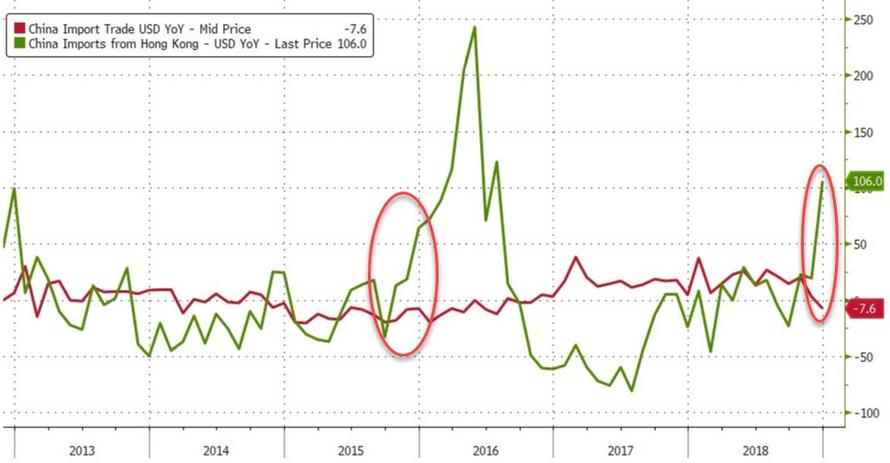
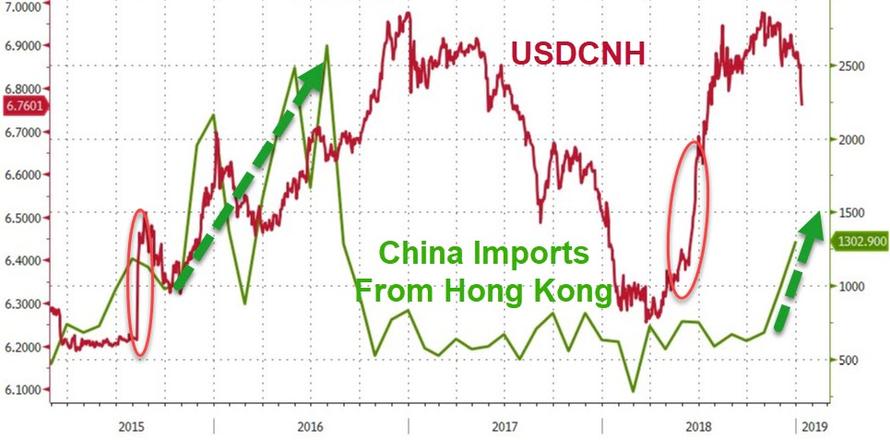
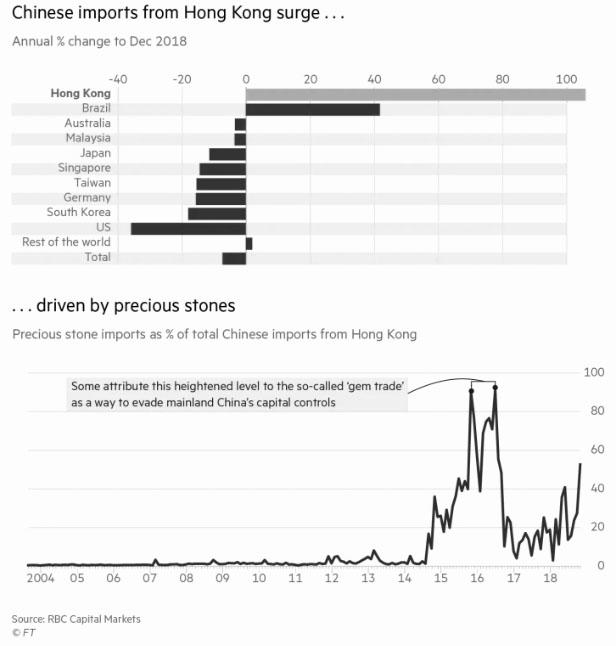
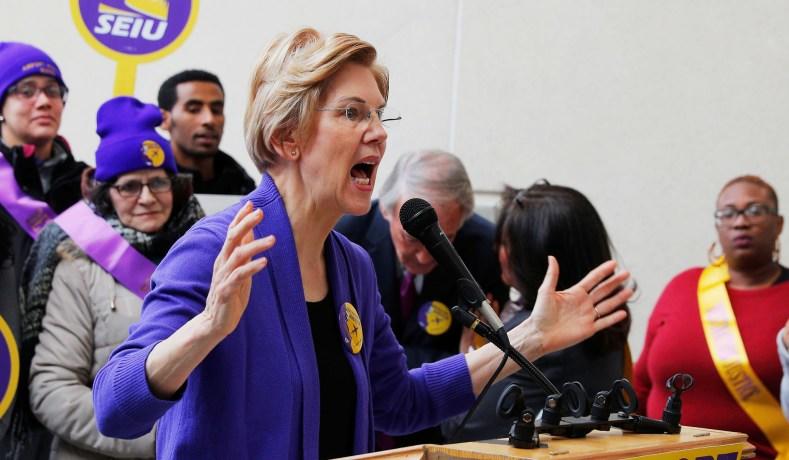

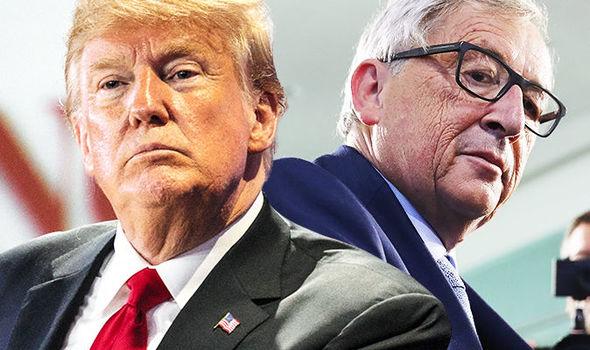
 A Washington State legislator has proposed legislation that would ban dwarf tossing, arguing that it’s “an offense to our sensibilities.”
A Washington State legislator has proposed legislation that would ban dwarf tossing, arguing that it’s “an offense to our sensibilities.”